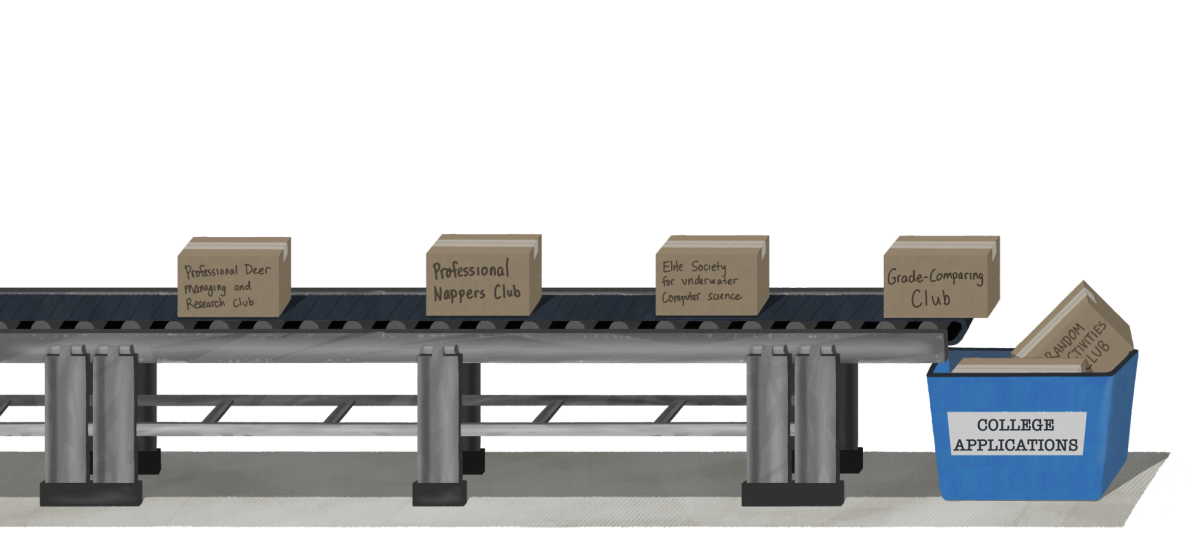Written by Cassandra Bond and Caroline Ro
In a report released in 2015 from the Minority Achievement and Talent Development Advisory Committee (MATD) to Palo Alto Uni ed School District (PAUSD), historically underrepresented (HUR) students were identified as needing support due to a noticeable achievement gap between them and their peers. PAUSD has defined
as well as support with extra training and guidelines.The District Equity Report outlines plans for the monitoring of HUR students’ proficiency and academic success through standardized test data from elementary school up through high school. Once this data is collected and analyzed, the district should act upon these results to close the struggling students’ gap.While academic success rests largely on a student’s performance at school, domestic life affects one’s ability to function and reach their full potential. In particular, parental influence plays an enormous role in students’ motivation HUR students as being African-American, His- panic/Latino, Paci c Island/Native Hawaiian, Native American/Alaskan or from a socioeconomically disadvantaged background. While PAUSD has made efforts in recent years to implement more helpful programs, they have
still failed to support higher achievement for HUR students. In the report,the MATD Task
force stated that HUR students are scoring 300 points lower on the SAT than their peers.
The committee has found that PAUSD needs to intervene earlier on in students’ educations, as well as hire an Equity Administrator to work with students and counselors on supporting HUR students. Although there has been movement in fixing the achievement gap issue, such as hiring an equity coordinator and continuing to determine and act on goals, it is imperative that the district continues to follow up on these goals as reported in the March board report, and are made responsible for the impacts, or lack thereof, of their changes.
One of the primary purposes of the MATD Task Force was to analyze data, research similar problems in different schools near Palo Alto and compile a list of recommended steps for PAUSD to consider when attempting to pro- mote the academic success of HUR students. While such recommendations were included in the report, visible change has yet to come to fruition.
The failure to support a change in the achievement gap stems from several is- sues, including assumptions made based on race and economic status. Focus groups of students and teachers from the MATD Task Force found that there are assumptions being made about where students live or how their aptitude measures in comparison to others. These generalizations affect how HUR students see their work against their peers and their motivation levels. Such problems were addressed in PAUSD’s 2016-2017 District Equity Plan, which outlined the district’s planned changes over the course of the next three years. is plan aims to combat this issue through the planned addition of district-wide state training against unconscious bias, but the efficacy of such infrequent sessions and vague goals is questionable and should be expanded upon. Although HUR students make up a relatively small percent- age of our school’s student body, their recognition and need for support affects the entire school. One big issue is laning, which is when there is a separation in the lanes of classes that results in the deepening of the gap between HUR students and their peers early on. In seventh grade, math lanes are chosen that can affect the classes a student has for the rest of their middle school and high school lives. Teachers have reported that HUR students do not have the support needed to be placed in higher lanes, causing a divide in the student body. Once placed in a lower lane, however, it can be difficult for a student to feel as motivated and successful when they have not been given the opportunity to advance.
Inappropriate laning can be solved by earlier intervention as well as support with extra training and guidelines. The District Equity Report outlines plans for the monitoring of HUR students’ proficiency and academic success through standardized test data from elementary school up through high school. Once this data is collected and analyzed, the district should act upon these results to close the struggling students’ gap.
While academic success rests largely on a student’s performance at school, domestic life affects one’s ability to function and reach their full potential. In particular, parental in Influence plays an enormous role in students’ motivation for and preparedness in school. However, not all parents have the resources to educate themselves on PAUSD’s system when it comes to testing, lan- i n g , c o l l e g e preparedness and other factors affecting the success of a student. W i t h o u t transparency between parents and administration, it is hard for the parents as well as administration to have the correct information on how to improve the students’ success. PAUSD plans to implement parent liaisons to improve relations with HUR families and provide them with more information nights by teachers in a wider variety of languages. While it is important for parents to acquire information pertaining to their students’ education, proper ways to support their children emotionally and indirectly should also be shared.
Regardless of what measures the district takes to improve the success of HUR students, it is hard to stand behind these efforts without statistics and concrete evidence to support their effectiveness. ere has been a call for more advanced and comprehensive data monitoring and analyzing systems by the district, and findings from such programs should be analyzed and publicized to hold the district accountable for the outcomes of their changes and to track their progress. Considering the problems identified in the report, PAUSD could implement changes such as expanding a er school pro- grams, to include reading practice and math assistance. Extra support like tutoring is especially important in elementary and middle schools to help younger students without the funds to work toward being placed in the appropriate lane that matches their peers. While high school students are able to seek tutoring fairly easily when struggling with classes, younger students are not as likely to find tutors who match their curriculum and prepare them for success in the PAUSD system. In this way,the future repercussions of inaccurate or skewed laning could be avoided.
Given that the issue of student inequity is present across the country, it is admirable that PAUSD is taking steps towards closing this achievement gap. As admirable as this effort is, it is just as important that PAUSD follows up with these goals and ensure that these changes are consequential and these intentions don’t lose their promise. Ample support for HUR students at Gunn is integral to the overall success our school and is not something that can be approached superficially or postponed.














